-
Quantifying Activation Delay and the Cole-More shift via Current Derivatives. Biophys. J. (IF 3.1) Pub Date : 2025-12-06 Bernardo I. Pinto-Anwandter, Francisco Bezanilla
-
Nucleotide-Dependent Actin Conformations Revealed by Multiscale Enhanced Sampling Biophys. J. (IF 3.1) Pub Date : 2025-12-06 Kenta Omoto, Ryotato Koike, Kei Moritsugu
Actin filaments are essential components of the cytoskeleton. Their structural polarity, characterized by distinct 'plus' (barbed) and 'minus' (pointed) ends, is crucial for the directional growth and dynamic behavior of actin filaments during cellular processes such as motility, division, and intracellular transport. Asymmetric and directional filament formation is highly regulated by the bound nucleotide
-
Hydration free energy is an incomplete predictor of globular protein incorporation into condensates Biophys. J. (IF 3.1) Pub Date : 2025-12-05 Sophie Anderson, Malcolm Harrison, Gregory L. Dignon
-
Outstanding Doctoral Research in Biophysics Award Application Essay Biophys. J. (IF 3.1) Pub Date : 2025-12-05 Yiechang Lin
-
Force Field Sensitivity of Ion Occupancy in Potassium Channels Biophys. J. (IF 3.1) Pub Date : 2025-12-05 Ramon Mendoza Uriarte, Benoît Roux
Potassium ion channels are responsible for the rapid selective conduction of K + ions through the cellular membrane. In 1955, Hodgkin and Keynes showed that K + channel conduction occurs via a multi-ion process in which 2-3 ions diffuse in single file along a narrow pore. This process is now commonly referred to as the "knock-on" mechanism. The availability of the crystallographic structure of the
-
Synapsin shields a lipid monolayer from interactions with vesicles and associated structural rearrangements Biophys. J. (IF 3.1) Pub Date : 2025-12-04 Hendrik Bruns, Titus Czajka, Charlotte Neuhaus, Maciej Jankowski, Diego Pontoni, Christian Hoffmann, Dragomir Milovanovic, Tim Salditt
Synapsins are the proteins responsible for recruiting synaptic vesicles into the synaptic vesicle cluster. As one of the most abundant synaptic proteins, synapsins are well known to directly interact with the synaptic vesicles, but they can also interact with planar membranes, notably the synaptic membrane, at least indirectly by tethering vesicles to the active zone. In order to contribute to a quantitative
-
A Versatile GPMV-Imaging Platform for Quantitative Analysis of Receptor Binding and Membrane Fusion Biophys. J. (IF 3.1) Pub Date : 2025-12-04 Inbar Yosibash, Suman Khan, Alisa Vaknin, Raviv Dharan, Alexandra Lichtenstein, Gonen Golani, Susan Daniel, Ori Avinoam, Raya Sorkin
Membrane fusion is central to biological processes such as viral entry, fertilization and cell-to-cell fusion. Gaining a mechanistic understanding of fusion requires the ability to visualize and quantify the dynamic interaction between two membranes and their associated protein machineries at high temporal and spatial resolution. However, studying these processes in live cells remains challenging due
-
Deciphering the Mechanics of Spindle Positioning Biophys. J. (IF 3.1) Pub Date : 2025-12-04 Dechang Li
-
Design of de novo nucleolar surface proteins Biophys. J. (IF 3.1) Pub Date : 2025-12-03 Amal Narayanan, Clifford P. Brangwynne
Biomolecular condensates are membraneless intracellular structures formed from the phase separation of proteins and nucleic acids. Although biomolecular condensates do not have a phospholipid membrane at their surface, recent studies reveal conspicuous assemblies of proteins at the interface between the dense and dilute phases of nucleoli, P granules, and other condensates. The molecular and biophysical
-
Beyond the motor-clutch paradigm: A coarse-grained model bridging molecular events to cell migration Biophys. J. (IF 3.1) Pub Date : 2025-12-03 Tong Shu
-
-
Understanding How Life Builds Its Protein Factories — One RNA Fold at a Time Biophys. J. (IF 3.1) Pub Date : 2025-11-29
-
Backbone conformational entropy change in helix folding Biophys. J. (IF 3.1) Pub Date : 2025-11-29 Uroš Zavrtanik, Jurij Lah, San Hadži
The main thermodynamic force opposing protein folding is the loss of the polypeptide conformational entropy. Backbone conformational entropy, as well as other thermodynamic forces associated with folding, are difficult to measure directly, even for simple model systems such as α-helices. Helix-coil theories describe α-helix folding as a process involving the loss of backbone conformational freedom
-
Poroelastic Mechanical Loading Disrupts Cytoskeletal Symmetry in 3D Architected Scaffolds Biophys. J. (IF 3.1) Pub Date : 2025-11-28 Kailin Chen, Alexander Bolanos-Campos, Mistica Lozano Perez, Erin Berlew, Tianbai Wang, Luc Capaldi, Ran Tao, Arnold Mathijssen, Joel D. Boerckel, Ottman A. Tertuliano
Cells in load-bearing tissues experience both solid deformation and interstitial fluid flow during physiological loading, but the mechanisms by which they integrate these poroelastic mechanical signals remain poorly understood. Here, we develop a porous, nanoarchitected 3D scaffold that allows simultaneous delivery and control of matrix strain and fluid shear stress. We validated the platform through
-
Nucleosome condensate and linker DNA alter chromatin folding pathways and rates Biophys. J. (IF 3.1) Pub Date : 2025-11-28 Yunrui Qiu, Shuming Liu, Xingcheng Lin, Ilona Christy Unarta, Xuhui Huang, Bin Zhang
Chromatin organization is essential for DNA packaging and gene regulation in eukaryotic genomes. While significant progresses have been made, the exact molecular arrangement of nucleosomes remains controversial. Using a well-calibrated residue-level coarse-grained model and advanced dynamics modeling techniques, particularly the non-Markovian dynamics model, we map the free energy landscape of tetra-nucleosome
-
Dynamics of Excitability in Axonal Trees Biophys. J. (IF 3.1) Pub Date : 2025-11-27 Laurie D. Cohen, Tamar Galateanu, Shimon Marom
We report that axons of cortical neurons, structurally intricate excitable media, maintain remarkably high fidelity in transmitting somatic spike timing, even during complex spontaneous network activity that includes extremely short (2–3 msec) inter-spike intervals. This robustness underscores their function as reliable conducting devices under physiological conditions. It is nevertheless well established
-
How protein hydration depends on amino acid composition, peptide conformation, and force fields Biophys. J. (IF 3.1) Pub Date : 2025-11-27 Johanna-Barbara Linse, Tobias M. Fischbach, Jochen S. Hub
The protein hydration shell is a key mediator of processes such as molecular recognition, protein folding, and proton transfer. How surface-exposed amino acids shape the hydration shell structure is not well understood. We combine molecular dynamics simulations with explicit-solvent predictions of small-angle X-ray scattering (SAXS) curves to quantify the contributions of all 20 proteinogenic amino
-
Bidirectional Regulation Mechanism of Magneto-Optical Behavior in Magnetotactic Bacteria Biophys. J. (IF 3.1) Pub Date : 2025-11-27 Haitao Chen, Yuanyuan Wei, Xianchu Li, Tao Song
Magnetotactic bacteria (MTB) utilize magnetosomes to navigate along magnetic fields and employ photosensitive proteins to respond to light. However, whether a synergistic mechanism exists between phototaxis and magnetotaxis remains unclear. To investigate the cooperative roles of the magnetosensitive protein Amb0994 and the photosensitive protein Amb2291 under magnetic reversal and coupled magneto-optical
-
Biomolecular Condensates as Cellular Memory Modules: Thermodynamic Principles and Plant Stress Adaptation Biophys. J. (IF 3.1) Pub Date : 2025-11-26 Shukendu Maity, Panagiotis Nikolaou Moschou
Organisms frequently encounter abiotic stresses such as drought, salinity, and extreme temperatures, requiring sophisticated adaptive mechanisms. Stress memory enables them to respond more efficiently to repeated environmental challenges by retaining information from prior exposures. Biomolecular condensates, dynamic, membrane-less cellular assemblies formed by liquid-liquid phase separation, have
-
Cold Atmospheric Plasma Promotes Migration Persistence Through Induced H2O2 and Electric Field Biophys. J. (IF 3.1) Pub Date : 2025-11-26 Benjamin Labérie, Louis Saugé, Anna Polesskaya, Antoine Rousseau, Alexis M. Gautreau
Cold atmospheric plasma (CAP) generates various products, including radiation, electrons, ions, electric field (EF) and reactive oxygen and nitrogen species. CAP promotes wound healing and has been implemented as several medical devices to treat acute or chronic wounds. Beyond the closure of the epidermal monolayer of keratinocytes, wound healing requires migration of dermal fibroblasts. The effect
-
Advances in mechanotransduction, dedicated to Frederick Sachs Biophys. J. (IF 3.1) Pub Date : 2025-11-26 Arthur Beyder, Valeria Vásquez
-
Plectin: The Cytoskeletal Crosslinker that Shields the Cell from Mechanical Damage Biophys. J. (IF 3.1) Pub Date : 2025-11-22 Farhan Chowdhury
-
Tau modulates the microtubule protofilament number distribution and structure Biophys. J. (IF 3.1) Pub Date : 2025-11-21 Tamar Tayri-Wilk, Itai Ben-Nun, Uri Raviv
Tau is a microtubule-associated protein that plays a critical role in regulating the organization and stability of microtubules (MTs) in neurons. Although the association of tau with MTs is well recognized, the structural consequences of its binding at steady state have remained poorly understood. Here, we combined small-angle x-ray scattering with AlphaFold predictions and high-resolution modeling
-
Reimagining Computational Macromolecular Modeling: AI-Driven Approaches Biophys. J. (IF 3.1) Pub Date : 2025-11-21 E.Sila Ozdemir, Hyunbum Jang, Ruth Nussinov, Ozlem Keskin, Attila Gursoy
Macromolecules, such as proteins, antibodies, nanobodies, and other affinity binders, play essential roles in therapeutic and diagnostic applications due to their high specificity and functionality. Understanding their structure is critical for deciphering their biological activity and drug discovery; however, the inherent complexity of these molecules poses significant challenges. Computational approaches
-
A multilevel formalism to model the hybrid E/M phenotypes in epithelial-mesenchymal plasticity Biophys. J. (IF 3.1) Pub Date : 2025-11-20 Kishore Hari, Shubham Tripathi, Vaibhav Anand, Mohit Kumar Jolly, Herbert Levine
Epithelial-mesenchymal plasticity is a cell-fate switching program that enables cells to adopt a spectrum of phenotypes ranging from epithelial (E) to mesenchymal (M), including intermediate hybrid E/M states. Hybrid E/M phenotypes are conducive to cancer metastasis, as they are associated with metastatic initiation, cancer stemness, drug resistance, and collective migration. Boolean models of the
-
-
Nonspecific interactions can lead to liquid-liquid phase separation in coiled-coil protein models Biophys. J. (IF 3.1) Pub Date : 2025-11-20 Dominique A. Ramirez, Anastasia Shrimpton, Michael R. Shirts, Loren E. Hough
Liquid-liquid phase separation (LLPS) is one mechanism that cells can use to organize biomolecules spatially and functionally. Some coiled-coil (CC) proteins, such as the centrosomal proteins pericentrin and spd-5, are thought to undergo LLPS, but it is currently unknown what parts of these proteins facilitate the process. It is thought, however, that the numerous CC domains in these proteins might
-
New and notable: Polarizing phosphorylated proteins Biophys. J. (IF 3.1) Pub Date : 2025-11-19 Sangram Prusty, Qiang Cui
-
NMR and molecular dynamics demonstrate the RNA internal loop GAGU is dynamic and adjacent basepairs determine conformational preference Biophys. J. (IF 3.1) Pub Date : 2025-11-19 Olayinka Akinyemi, Scott D. Kennedy, James P. McSally, David H. Mathews
The conformational variability of RNA duplexes with internal loop 5′GAGU/3′UGAG was investigated by nuclear magnetic resonance (NMR) spectroscopy and all-atom molecular dynamics (MD) simulations. It was previously found that the CG-flanked internal loop in 5′GACGAGUGUCA/3′ACUGUGAGCAG existed in a major conformation (I) characterized by U7 and U7∗ bulging into solution, A5 and A5∗ stacking, and G4-G6∗
-
The influence of intercalated disk nanostructure on local ionic currents and cardiac conduction Biophys. J. (IF 3.1) Pub Date : 2025-11-19 Ruichen Sui, Nicolae Moise, Seth H. Weinberg
The intercalated disk (ID) is a structurally heterogeneous junctional complex essential for synchronized cardiac conduction and contraction. Previous computational models have investigated the influence of ID structure on cardiac conduction. However, most have relied on oversimplified geometries and uniformly distributed ion channels, limiting their ability to capture nanoscale heterogeneity. In this
-
Viscoelasticity explains fast adaptation in the auditory amplifiers of mammals Biophys. J. (IF 3.1) Pub Date : 2025-11-17 Rayan Chatterjee, Dáibhid Ó Maoiléidigh
When we hear, sound-induced deflections of our sensory outer-hair-cell bundles are transduced into receptor currents. These receptor currents drive the cochlear amplifier, which is required for our ear’s high sensitivity, broad dynamic range, and sharp frequency selectivity. Adaptation maintains the sensitivity of receptor currents to bundle deflections, but the mechanisms underlying adaptation in
-
A constitutive model deciphers the viscoelastic mechanics of metaphase spindle positioning Biophys. J. (IF 3.1) Pub Date : 2025-11-14 Houbo Sun, Yuehua Yang, Hongyuan Jiang
The precise positioning and orientation of mitotic spindles are critical for ensuring accurate segregation of daughter cells during tissue development. Spindle positioning machinery—composed of astral microtubules and motor proteins—must withstand diverse mechanical forces, requiring robust mechanical properties. However, due to the difficulty in experimental measurements, the viscoelastic properties
-
An atypical V-shaped garvicin C bacteriocin targets Man-PTS via domain insertion Biophys. J. (IF 3.1) Pub Date : 2025-11-14 Aleksandra tymoszewska, Kamil steczkiewicz, Tamara aleksandrzak-piekarczyk
Bacteriocins are ribosomally synthesized antimicrobial peptides that often rely on specific membrane receptors for activity. Among these receptors, the mannose-specific phosphotransferase system (Man-PTS) is a conserved bacterial target for structurally diverse peptides. While most Man-PTS-binding bacteriocins share a canonical β-sheet/α-helix fold, members of the GarC-like subgroup exhibit an atypical
-
Caveolin-1-dependent regulation of cell-matrix interphase in 3D collagen gels Biophys. J. (IF 3.1) Pub Date : 2025-11-13 Debasmita Mazumdar, Sujal Kataria, Gyanendra Prasad Panda, Atharva Kulkarni, Shivprasad Patil, Mamoni Dash, Nagaraj Balasubramanian
Cell and extracellular matrix interactions are essential for maintaining tissue function and homeostasis. Changes in the biochemical or mechanical properties of the extracellular matrix can lead to diseases such as fibrosis or cancer. In a 3D microenvironment, cell-matrix interaction is vital to how cells sense and respond to biochemical and biophysical cues. This study examines the reciprocal interactions
-
Insights into fibrinogen mechanics under cyclic high-strain loading Biophys. J. (IF 3.1) Pub Date : 2025-11-12 Mayar Tarek Ibrahim, Sajjad Norouzi, Uma Paul, Sapun H. Parekh, Pengyu Ren
Fibrinogen plays a central role in the physiological processes of blood coagulation and, unfortunately, ischemic stroke, where it is routinely exposed to mechanical forces. In this study, we employed atomistic molecular dynamics simulations to subject fibrinogen to three cycles of high-strain loading (∼17.5–27.5%) and unloading, enabling us to probe its mechanical response under cyclic stress. To capture
-
All-optical diamond heater-thermometer enables versatile and reliable thermal modulation of ion channels at the single-cell level Biophys. J. (IF 3.1) Pub Date : 2025-11-12 Jean-Sébastien Rougier, Eugene Glushkov, Sabrina Guichard, Jan Kucera, Vadim Zeeb, Hugues Abriel
A living cell is a nonequilibrium thermodynamic system where, nevertheless, a notion of local equilibrium exists. This notion applies to all micro- and nanoscale aqueous volumes, each containing a large number of molecules. This allows one to define sets of local conditions, including thermodynamic ones; for instance, a defined temperature requires thermodynamic equilibrium by definition. Once such
-
Stepwise disassembly of supramolecular structures triggered by specific protein binding Biophys. J. (IF 3.1) Pub Date : 2025-11-12 Zhiguang Jia, Allen M. Chen, Shanlong Li, S. Thayumanavan
Supramolecular assemblies that can spontaneously disassemble in response to specific protein binding provide a powerful platform for sensing and targeted delivery. This concept has been previously demonstrated using a peptide-based amphiphilic polymer (P1) that consists of both hydrophobic M1 and hydrophilic M2 and M3 side chains and presents a specific ligand for protein bovine carbonic anhydrase
-
Structural insights into an inward proton-pumping rhodopsin Biophys. J. (IF 3.1) Pub Date : 2025-11-12 Jessica E. Besaw, Shiyun Peng, Anling Kuo, Jörg Reichenwallner, R.J. Dwayne Miller, Leonid S. Brown, Oliver P. Ernst
Two phylogenetically distinct groups of microbial rhodopsins show light-induced inward proton transport activity, xenorhodopsins (XeRs) and schizorhodopsins (SzRs). However, structural insights into inward proton pumps are limited, as only three structures have been determined to date, Nanosalina xenorhodopsin (NsXeR), Bacillus coahuilensis xenorhodopsin (BcXeR), and Lokiarchaeota archaeon Schizorhodopsin-4
-
A new approach for high-content traction force microscopy to characterize large cell ensembles Biophys. J. (IF 3.1) Pub Date : 2025-11-12 Nicolas Desjardins-Lecavalier, Santiago Costantino
Accurate measurements of cellular forces are important for understanding a wide range of biological processes where traction plays a major role. The characterization of mechanical properties is needed to unravel complex phenomena like migration, morphogenesis, mechanotransduction, or shape regulation, but accurate data on large numbers of single cells remain scarce and challenging. The capacity to
-
Steric effects of central dogma processes on the compaction and segregation of bacterial nucleoids Biophys. J. (IF 3.1) Pub Date : 2025-11-11 Mu-Hung Chang, Maxim O. Lavrentovich, Jan-Michael Y. Carrillo, Jaan Männik
The bacterial cytoplasm is characterized by a distinctive membrane-less organelle, the nucleoid, which harbors the chromosomal DNA. We investigate the steric effects of dynamic processes associated with transcription and translation on the structure of this organelle using coarse-grained molecular dynamics simulations that incorporate out-of-equilibrium reactions. Our model captures the scale of the
-
Impact of staining on cell acoustic properties Biophys. J. (IF 3.1) Pub Date : 2025-11-10 Qing Wang, Taru Verma, Alexander Edthofer, Thierry Baasch, Thomas Laurell, Karina K. Sand, Andreas Lenshof, Wei Qiu
Cell staining techniques are essential for cell visualization and bioanalysis, providing valuable insights into cellular structure, function, and behavior. Despite their significance, the impact of staining processes, such as dye penetration, adsorption, or hydrogen bonding, on the physical properties of cells remains largely unexplored. Acoustic methods have proven effective in noninvasively probing
-
Enhancing biological SAXS by solvent contrast variation: Effect on structural stability and enzymatic activity Biophys. J. (IF 3.1) Pub Date : 2025-11-08 Viviam M. Da Silva, Aurélien Thureau, Dominique Madern, Bruno Franzetti, Wanius Garcia, Javier Pérez, Eric Girard, Frank Gabel
Small-angle x-ray scattering (SAXS) has evolved over the past decades into an essential structural biology technique for the study of conformational states of solubilized biomacromolecules and assemblies. It complements a multitude of other methods, including the atomic-resolution techniques NMR, crystallography, and cryo-EM. In the vast majority of applications, the biological systems of interest
-
RGS proteins: Potential regulators of mouse melanopsin’s signaling phototransduction cascade across ipRGC subtypes Biophys. J. (IF 3.1) Pub Date : 2025-11-07 Lee H. Harkless, K.M. Daly, Grayson P. Ostermeyer, Samer Hattar, R. Lane Brown, Phyllis R. Robinson
Melanopsin, a G-protein coupled receptor (GPCR) and photopigment, mediates nonimage-forming and image-forming visual behaviors. There are six subtypes of intrinsically photosensitive retinal ganglion cells (ipRGCs) in the mouse retina; although melanopsin signals through Gαq in all subtypes, evidence suggests that M1 and M4 ipRGCs may utilize distinct phototransduction pathways. We sought to uncover
-
Tracking the morphological evolution of neuronal dendrites by first-passage analysis Biophys. J. (IF 3.1) Pub Date : 2025-11-07 Fabian H. Kreten, Barbara A. Niemeyer, Ludger Santen, Reza Shaebani
A high degree of structural complexity arises in dynamic neuronal dendrites due to extensive branching patterns and diverse spine morphologies, which enable the nervous system to adjust function, construct complex input pathways, and thereby enhance the computational power of the system. Recognition of pathological changes due to neurodegenerative disorders is of crucial importance due to the determinant
-
Division of labor in cargo and membrane recognition by SNX1-SNX5: Insights from multiscale modeling Biophys. J. (IF 3.1) Pub Date : 2025-11-07 Satya Chaithanya Duggisetty, Gaurav Kumar, Krishnakanth Baratam, Anand Srivastava
Sorting nexins (SNXs) are a large group of diverse cellular trafficking proteins that play essential roles in membrane remodeling and cargo sorting between organelles. SNX proteins comprise a banana-shaped BAR domain that acts as a curvature-inducing scaffold and a phosphoinositide lipid-sensitive phox homology domain (PXD) that interacts with the membrane to ensure specific and efficient organelle
-
Does amyloid fibril nucleation occur at surfaces only? Biophys. J. (IF 3.1) Pub Date : 2025-11-06 Jon Pallbo, Sara Linse, Ulf Olsson
The Aβ42 peptide (APP(672–713)), associated with Alzheimer disease, is highly prone to form amyloid fibrils and has been extensively studied through in vitro experiments. Such experiments represent a basis for understanding the biophysical chemistry of amyloid-related diseases. In this communication, we show that homogeneous primary nucleation in vitro of Aβ42 fibrils is a very rare event, implying
-
Disassembly orders of protein complexes by coarse-grained simulations with dynamic native contacts Biophys. J. (IF 3.1) Pub Date : 2025-11-05 Zixuan Zhang, Guanglin Chen, Zhiyong Zhang
Protein complexes perform biological functions through specific structural assemblies. Although experimental techniques and AI-driven methods have resolved structures of numerous protein complexes, their assembly orders of subunits remain largely unknown. Understanding the assembly order of a protein complex is crucial for in vitro drug synthesis, subcomplex engineering, and elucidating biological
-
Challenges in biomolecular simulations Biophys. J. (IF 3.1) Pub Date : 2025-11-05 Tamar Schlick, Rommie E. Amaro, Abhishek Singharoy
-
Advanced coarse-grained model for fast simulation of nascent polypeptide chain dynamics within the ribosome Biophys. J. (IF 3.1) Pub Date : 2025-11-05 Shiqi Yu, Artem Kushner, Ella Teasell, Wenjun Zhao, Simcha Srebnik, Khanh Dao Duc
The nascent polypeptide exit tunnel (NPET) is a subcompartment of the ribosome that constrains the dynamics of nascent polypeptide chains during protein translation. Simulating these dynamics has been limited by the spatial scale of the ribosome and the temporal scale of elongation. Here, we present an automated pipeline to extract the geometry of the NPET and the ribosome surface at high resolution
-
Interplay between Rac1/RhoA and actin waves in giant epithelial cells: Experiment and theory Biophys. J. (IF 3.1) Pub Date : 2025-11-03 Rémi Berthoz, He Li, Marie André, Michèle Lieb, Lucien Hinderling, Benjamin Grädel, Jakobus Van Unen, Olivier Pertz, Karsten Kruse, Daniel Riveline
The acto-myosin cytoskeleton is a key driver of cellular shape changes in vivo and in vitro. Acto-myosin organization results from actin assembly and interactions between actin and myosin, which are both regulated by small Rho GTPases like Rac1 and RhoA. To uncover principles governing cytoskeletal organization, we analyzed actin patterns using live microscopy and theory in flat cortical layers of
-
Mapping signal transduction in bistable jumping spider rhodopsin 1 Biophys. J. (IF 3.1) Pub Date : 2025-11-03 Flavio Costa, Emanuele Telari, Daniel Moreno-Rodríguez, Simone Meloni, Jógvan Magnus Haugaard Olsen, Alberto Giacomello, Giovanni Di Muccio
G-protein-coupled receptors are key drug targets due to their role in cellular signaling. Among them, bistable rhodopsins such as the jumping spider rhodopsin 1 (JSR1), are promising for optogenetic applications, but their transduction mechanisms remain poorly understood. In this study, we used microsecond equilibrium molecular dynamics simulations, network analysis, and machine learning to investigate
-
Characterization of transient elasticity in neutrophils Biophys. J. (IF 3.1) Pub Date : 2025-11-01 Richard E. Waugh, Elena Lomakina
Leukocyte deformability is important for the function of these cells as they undergo passage through the vasculature and adhere and deform on the endothelium, particularly in the microvasculature. Existing mechanical descriptions of the cell fail to account completely for cell behavior, even when cells are in the passive state. We present new evidence of a persistent elastic contribution to the stresses
-
ptmK: A computationally efficient toolkit for high-throughput lysine PTM modeling in proteins Biophys. J. (IF 3.1) Pub Date : 2025-11-01 Chenjie Feng, Peng Zhang, Lei Bao, Yideng Jiang, Renmin Han
Lysine residues in proteins are frequently modified posttranslationally, adding functional complexity to the proteome and playing critical roles in cellular regulation and disease. However, modeling these modifications in 3D protein structures remains challenging due to the limited availability of accessible and high-throughput computational tools. We present ptmK, a lightweight, standalone toolkit
-
Targeting Tmem63b and Piezo2 in C-fiber low-threshold mechanoreceptors: Limitation of Vglut3-IRES-Cre Biophys. J. (IF 3.1) Pub Date : 2025-11-01 Daniel J. Orlin, Antonio Muñoz, Sage Berryman, Destinee Semidey, Swetha E. Murthy
Peripheral somatosensory neurons in the dorsal root ganglia (DRG) transduce mechanical force in the skin and other organs into electrical signals using specialized mechanically activated (MA) ion channels that initiate neuronal activation in response to force. Increasing evidence highlights PIEZO2 as the primary transducer of low-threshold mechanical force in DRG neurons. However, in the absence of
-
Mechanically gated currents in mouse sensory neurons lacking PIEZO2 Biophys. J. (IF 3.1) Pub Date : 2025-11-01 Oscar Sánchez-Carranza, Valérie Bégay, Sampurna Chakrabarti, Mireia Pampols-Perez, Lin Wang, Jonathan Alexis García-Contreras, Annette Hammes, Gary R. Lewin
Touch sensation starts with the opening of mechanically gated activated ion channels at neuroglial endings of mechanoreceptors in the skin. The function of around half of low-threshold mechanoreceptors is dependent on the presence of the mechanically gated ion channel PIEZO2. It has been reported that particularly rapidly adapting mechanosensitive currents (RA currents) in the cell bodies of acutely
-
Comparing PAS domain-coupled intrinsic dynamics in bHLH-PAS domain transcription factor complexes Biophys. J. (IF 3.1) Pub Date : 2025-10-31 Karthik Sudarsanam, Ashutosh Srivastava, Sandhya P. Tiwari
The basic helix-loop-helix Per-Arnt-Sim (bHLH-PAS) transcription factors (TFs) are regulators of several critical cellular functions such as circadian rhythm, hypoxia response, and neuronal development. Although PAS domains adopt a conserved fold, recent studies suggest that their interaction interfaces differ distinctly in different TF complexes. However, the implications of these differences on the
-
Theory of photosynthetic membrane influence on B800-B850 energy transfer in the LH2 complex Biophys. J. (IF 3.1) Pub Date : 2025-10-30 Chawntell Kulkarni, Hallmann Óskar Gestsson, Lorenzo Cupellini, Benedetta Mennucci, Alexandra Olaya-Castro
-
Frequency-dependent cellular microrheology with pyramidal atomic force microscopy probes Biophys. J. (IF 3.1) Pub Date : 2025-10-30 Erika A. Ding, Sanjay Kumar
Atomic force microscopy (AFM) is widely used to measure the elastic properties of living cells, typically by extracting the Young’s (elastic) modulus from force-indentation curves acquired at a fixed loading rate. However, it is increasingly clear that cells relax applied stresses over time and exhibit significant frequency-dependent loss properties, a phenomenon that figures centrally in many biological
-
Membrane binding and clustering of NAP-22, a neuron-enriched intrinsically disordered protein Biophys. J. (IF 3.1) Pub Date : 2025-10-28 Sakiko Kojima, Yasushi Tanimoto, Masato Koezuka, Fumio Hayashi, Shohei Maekawa, Kenichi Morigaki
Neuronal acidic protein of 22 kDa (NAP-22, also called CAP23 or BASP1) is a myristoylated protein highly expressed in brain (> 0.4% of the total protein), and it highly localizes in the presynaptic region. NAP-22 was found to be a major component of detergent-resistant membrane fraction of brain, indicating its affinity to the cholesterol-enriched lipid domains (lipid rafts). In addition to several
-
A multiscale screening platform for rapid GPCR variant profiling reveals color-tuned JSR1 mutants Biophys. J. (IF 3.1) Pub Date : 2025-10-27 Jonas Mühle, Deborah Walter, Marielouise Griebl, Gebhard F.X. Schertler
Integral membrane proteins such as G-protein-coupled receptors (GPCRs), including visual pigments, are critical targets in both fundamental and pharmaceutical research. However, low expression levels and intrinsic instability often hinder their functional and structural characterization. Therefore, efficient screening methods are needed to identify suitable candidates for biochemical and biophysical




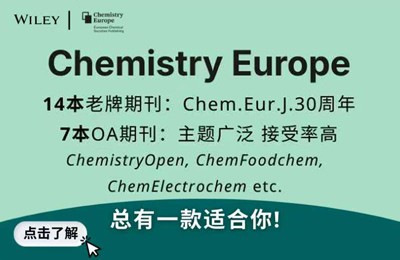
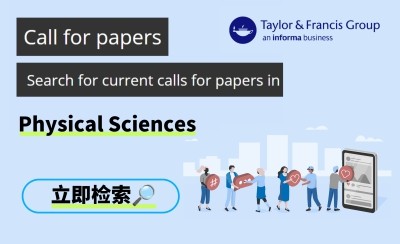





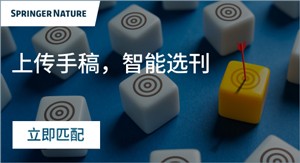









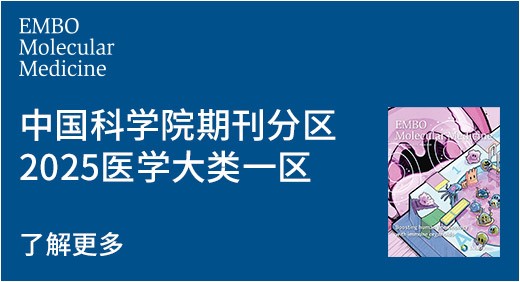
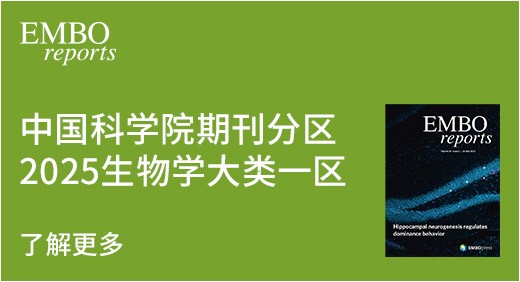




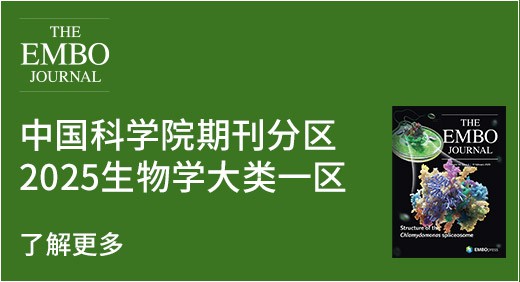





















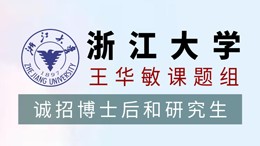
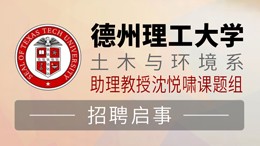




 京公网安备 11010802027423号
京公网安备 11010802027423号